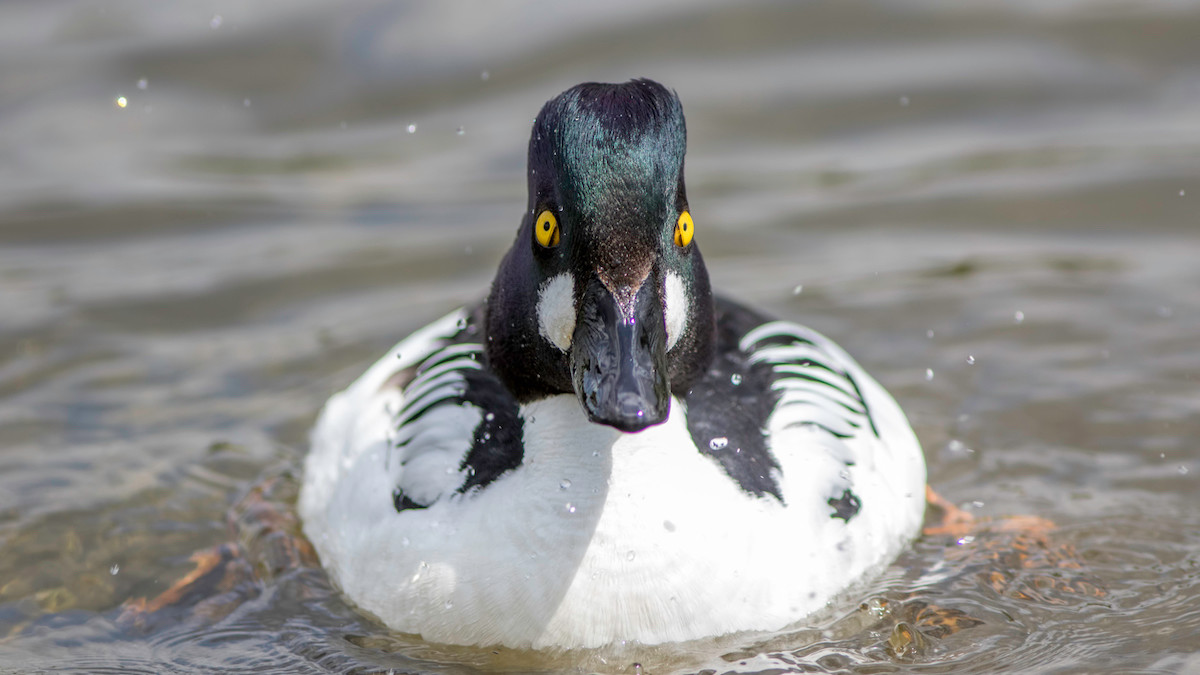
If you spend a single day out hunting waterfowl, you’ll quickly learn that their eyesight is almost second to none. They can pick out even the most hidden blinds, they’ll flare off the simplest of movements, and they have an uncanny ability to see and land with a lone real duck instead of your dozens of decoys.
So what makes waterfowl vision so exceptional?
Cones and Rods Cones and rods are the photoreceptors in the eye. Cones allow you to see color and see during daylight, and rods are the receptors that enable low-light vision. Humans have three types of cones, and those provide us the ability to see the red-green-blue spectrum. But waterfowl and most other birds have a fourth type of cone, which allows them to see in the ultraviolet spectrum. So rather than just seeing red, green, blue, and variations of the three, a duck sees a fourth primary color that we can’t see.
I got to speak about ultraviolet vision with Dr. Lewis Oring, a renowned ecologist who has studied a wide variety of birds.
“Almost all birds have UV vision, we know that, but nobody has done anything comprehensive about how they use it,” Oring said. “Undoubtedly they see things we don’t see. It has always fascinated me, when I was looking at birds-of-paradise in New Guinea, I was almost certain they could see brilliant UV. What looked like black to me would be much different to them.”
UV vision isn’t the only advantage ducks have over humans. “They also have a high density of rods that allow them to see at night,” Oring said.
And the perks of bird vision don’t stop there. In addition to seeing a wider range of the light spectrum and having better low-light vision, they have another advantage.
A Visual Streak I pulled out all the stops to better understand waterfowl vision, so I made a call to Dr. Mike Brasher from Ducks Unlimited. Brasher explained a variety of avian eye physiology, but one thing that really stuck out to me was the visual streak.
“There’s a study on ecomorphology in waterfowl that explored different foraging modes of 12 different species, and how it would create eye morphology,” said Brasher. “The study didn’t find much, but they noted that all species have a corneal streak that gives them a higher visual acuity in a particular field of their vision. It allows these birds to scan the horizon with the portion of the eye that gives them higher visual acuity, almost like the Eye of Mordor.”
Hindsight is 20/20, but I have a lot of anecdotes from hunting that make more sense with this detail taken into consideration. For example, I’ve had too many hunts in the rain or fog where the hide is great and the decoys seem perfect, but the geese or ducks seem to hit an invisible wall where they instantly recognize something is wrong. I’ve never grasped what that is, but a single moment of visual clarity on their part would be an easy way to explain away these bad hunts.
How Does It Affect Behavior? Even though we know a duck’s eye physiology, how they use their eyes is anything but understood. There’s been very little research on vision in waterfowl specifically, but some of the studies that do exist are astounding.
“There’s a study on UV light with sandhill cranes. Sandhills on the Platte River were having collisions with a major power line, and they were mostly happening at night,” Brasher said. “They used an ultraviolet light to illuminate the problematic area of the power lines and saw a 98% reduction in collisions.”
This specific study was more than just an impressive demonstration of UV vision in waterfowl to me. It highlights how little we understand the things we can’t see and experience ourselves. If “shining” an ultraviolet light on a thin wire can help cranes travel safely at night, what other behavioral effects does ultraviolet vision have that we haven’t studied? What does freshly cut vegetation on a layout blind look like in ultraviolet next to older combined corn? What would happen if you doused your decoy spread in ultraviolet light or purposely cast an ultraviolet shadow on your blinds? Do we need the detailed paint schemes we see in RGB to also be in ultraviolet? The sky is the limit.
What We Don’t Know I tried my best to find studies about waterfowl vision and its impact on their behavior, but the research doesn’t exist. Both Brasher and Oring confirmed that it just hasn’t been a priority.
“We have shifted over the last 40 years to studying the ecology of birds in their habitat and the habitat itself, more than the basic physiology,” Brasher said. “The habitat research has provided a lot of gains.”
Dr. Brasher is right. Understanding the habitats that waterfowl need to survive is critical for good management practices. The importance of preserving our wetlands is undeniable, but I can’t help but wonder: How many other opportunities for improved waterfowl management are out there?
Dr. Oring sees the chance for other ornithologists to make a difference. “When I was doing the birds-of-paradise research, it immediately clicked that a good student could make a heck of a reputation for themselves by doing something comprehensive about UV vision,” Oring said.
I hope that student comes along, and I can’t wait to see their work.




